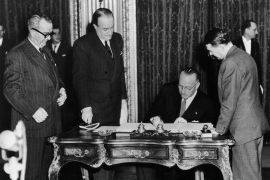
In critical times, it is fair to determine the relevance...
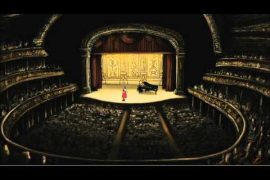
Animac, scheduled for the 22nd to 25th of February in...

The festival redoubles its commitment to offering a wide variety...

Hollywood has taught that three possible destinations await humanity: fighting,...
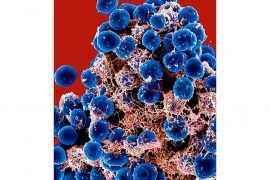
We are beginning to take in that it is possible...

In real life, it sometimes happens that the deepest lessons...
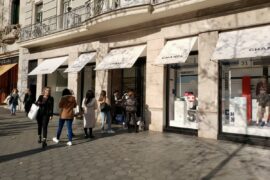
Rents increase 9% due to competitive pressure and reach 3,000...

Research data confirm that physical exercise inactivity is a serious...

The hospital's managing director, Manel del Castillo, and the pharmaceutical...
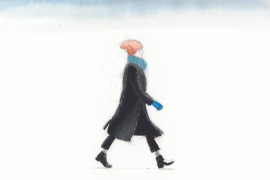
The explanation of the cold in our latitudes is in...

Música clásica sobre la arena de la playa en dos...

The first session of the cycle on the regatta organized...

The hospital's managing director, Manel del Castillo, and the pharmaceutical...

Generalitat y Ayuntamiento impulsarán dos equipamientos de 'Casa de les...

Leticia Beleta, director of Alexion Pharmaceuticals in Spain and Portugal,...

We all have a friend who never leaves the Gràcia...

Barcelona director opts for Best International Film with 'La sociedad...

The hotel and industrial sectors softened the market's decline last...

The technology company, with a workforce of 35 employees and...

“The women of yesteryear were strong and had to fight...
[dropcap letter=”A”]
few weeks before the declaration of the Republic, in a visit of some friends to the low-life Barcelona dance club La Criolla, Josep Pla jotted down in the club’s guest book: “Your café is full of life, is a great touristic bonus and gives a good image of us”. It was on 13th February 1931. On 15th June of the same year, the journalist Sebastià Gasch wrote down in the same pages the following dedication: “To Mr Antonio, cordial owner of La Criolla, the only place in Barcelona that makes us look good with foreigners”. It stands to attention the reference, in both cases, of its status as a tourist attraction. La Criolla, an institution that opened its doors in 1925 in number 10 Calle Cid —almost at the same time that Francisco Madrid coined the expression Barrio Chino to refer to one of the most downgraded areas of the fifth district of Barcelona, first in some documentaries like El Escándalo and the following year in the bestselling book Sangre en Atarazanas—. La Criolla was a mythical place, visited by Spaniards from all social layers and also European tourists. In the second half of the 1920s, and specially the following decade, La Criolla became the most unconventional, cosmopolitan and attractive institution in Barcelona, where cocaine flowed —also known as mandanga or, if it was of high quality, mandanga chachi—, homosexuality and transvestism were openly displayed, prostitution was welcome, like dancing between people of the same or different sex at the frenzied rhythms of a little band that was, in itself, a real show.
“The ladies and the gentlemen standing at the door of La Criolla were not too noticeable. The area was used to this type of visits, and there had been quite some literature over the unpleasant aspect of the fifth district, and the foreigners and the curious from the country were welcome in La Criolla in a pleasant and correct manner”
La Criolla became the centre of the tournées des grans ducs in Barcelona. The press and the literature gave popularity to this phenomenon. London, Paris and other European cities had seen similar situations during the 19th century, involving the discovery of urban low-life, downgraded and picturesque, with its prostitutes and its pickpockets, boozes and stabbings, stinking streets and danger. The expression, in French, referred to excess and extravagance from the great Russian dukes in the city of the Seine and applied to the group of tourists, businesses, local and foreign which, during one night, gave free reign to exoticism and new sensations in an environment close to indigence. Josep Maria de Sagarra, in Private life (1932), described a visit of the man to La Criolla. In one of the paragraphs in the book, he points out: “The ladies and the gentlemen standing at the door of La Criolla were not too noticeable. The area was used to this type of visits, and there had been quite some literature over the unpleasant aspect of the fifth district, and the foreigners and the curious from the country were welcome in La Criolla in a pleasant and correct manner”. Heaven or the bourgeois and aristocratic purgatory were moved, for a few hours and under control —a bit of wariness even fear, though, was essential to complete this search for exciting sensations and anthropological experiments—, in the urban inferno. The list of famous visitors is extensive. La Criolla positioned Barcelona at the forefront of European tourism in the years between the two world wars.
There is a recent publication of an interesting book by Paco Villar with a dedication to this famous institution, La Criolla. Subtitled La puerta dorada del Barrio Chino [The Golden Gateway to the Red-light District], the author threshes a detailed and entertaining account of La Criolla, from its inauguration in 1925 to 1938, when a bomb from the Italian air force exploded in the middle of the building. Apart from reconstructing the several stages of the famous dance floor, the dancing —with its customers, shows and its much-cherished private room—, Villar writes out a true biography of the seedy Calle Cid, from its industrial time to the apparent splendour of the 1930s, without forgetting the sinister guest houses, the crowded brothels of Manquet, the tavern La Mina, immortalized by Juli Vallmitjana, La Taurina —a young Carmen Amaya danced there—, the beauty pageant Miss Barrio Chino, exclusively for transvestites or drag queens in their twilight years. Also worth noting are such characters as Flor de Otoño or Maruja Guerrero, the Queen of Barrio Chino. This Barcelona reminds us of transgression, happiness and sexual freedom. But also appears as a turbulent capital city, with vast low-life areas of scarring poverty, which became one of the main Mediterranean centres of human trafficking, prostitution and drug consumption. As explained in 1934 by Francisco Madrid, La Criolla, together with Cal Sagristà —or Casa Sacristán, also in Calle Cid or, as some illustrious French visitors put it, El Cid Campeador—, gave Barcelona more popularity than the 1929 International Exposition and its romantic museum.
[dropcap letter=”A”]
few weeks before the declaration of the Republic, in a visit of some friends to the low-life Barcelona dance club La Criolla, Josep Pla jotted down in the club’s guest book: “Your café is full of life, is a great touristic bonus and gives a good image of us”. It was on 13th February 1931. On 15th June of the same year, the journalist Sebastià Gasch wrote down in the same pages the following dedication: “To Mr Antonio, cordial owner of La Criolla, the only place in Barcelona that makes us look good with foreigners”. It stands to attention the reference, in both cases, of its status as a tourist attraction. La Criolla, an institution that opened its doors in 1925 in number 10 Calle Cid —almost at the same time that Francisco Madrid coined the expression Barrio Chino to refer to one of the most downgraded areas of the fifth district of Barcelona, first in some documentaries like El Escándalo and the following year in the bestselling book Sangre en Atarazanas—. La Criolla was a mythical place, visited by Spaniards from all social layers and also European tourists. In the second half of the 1920s, and specially the following decade, La Criolla became the most unconventional, cosmopolitan and attractive institution in Barcelona, where cocaine flowed —also known as mandanga or, if it was of high quality, mandanga chachi—, homosexuality and transvestism were openly displayed, prostitution was welcome, like dancing between people of the same or different sex at the frenzied rhythms of a little band that was, in itself, a real show.
“The ladies and the gentlemen standing at the door of La Criolla were not too noticeable. The area was used to this type of visits, and there had been quite some literature over the unpleasant aspect of the fifth district, and the foreigners and the curious from the country were welcome in La Criolla in a pleasant and correct manner”
La Criolla became the centre of the tournées des grans ducs in Barcelona. The press and the literature gave popularity to this phenomenon. London, Paris and other European cities had seen similar situations during the 19th century, involving the discovery of urban low-life, downgraded and picturesque, with its prostitutes and its pickpockets, boozes and stabbings, stinking streets and danger. The expression, in French, referred to excess and extravagance from the great Russian dukes in the city of the Seine and applied to the group of tourists, businesses, local and foreign which, during one night, gave free reign to exoticism and new sensations in an environment close to indigence. Josep Maria de Sagarra, in Private life (1932), described a visit of the man to La Criolla. In one of the paragraphs in the book, he points out: “The ladies and the gentlemen standing at the door of La Criolla were not too noticeable. The area was used to this type of visits, and there had been quite some literature over the unpleasant aspect of the fifth district, and the foreigners and the curious from the country were welcome in La Criolla in a pleasant and correct manner”. Heaven or the bourgeois and aristocratic purgatory were moved, for a few hours and under control —a bit of wariness even fear, though, was essential to complete this search for exciting sensations and anthropological experiments—, in the urban inferno. The list of famous visitors is extensive. La Criolla positioned Barcelona at the forefront of European tourism in the years between the two world wars.
There is a recent publication of an interesting book by Paco Villar with a dedication to this famous institution, La Criolla. Subtitled La puerta dorada del Barrio Chino [The Golden Gateway to the Red-light District], the author threshes a detailed and entertaining account of La Criolla, from its inauguration in 1925 to 1938, when a bomb from the Italian air force exploded in the middle of the building. Apart from reconstructing the several stages of the famous dance floor, the dancing —with its customers, shows and its much-cherished private room—, Villar writes out a true biography of the seedy Calle Cid, from its industrial time to the apparent splendour of the 1930s, without forgetting the sinister guest houses, the crowded brothels of Manquet, the tavern La Mina, immortalized by Juli Vallmitjana, La Taurina —a young Carmen Amaya danced there—, the beauty pageant Miss Barrio Chino, exclusively for transvestites or drag queens in their twilight years. Also worth noting are such characters as Flor de Otoño or Maruja Guerrero, the Queen of Barrio Chino. This Barcelona reminds us of transgression, happiness and sexual freedom. But also appears as a turbulent capital city, with vast low-life areas of scarring poverty, which became one of the main Mediterranean centres of human trafficking, prostitution and drug consumption. As explained in 1934 by Francisco Madrid, La Criolla, together with Cal Sagristà —or Casa Sacristán, also in Calle Cid or, as some illustrious French visitors put it, El Cid Campeador—, gave Barcelona more popularity than the 1929 International Exposition and its romantic museum.
